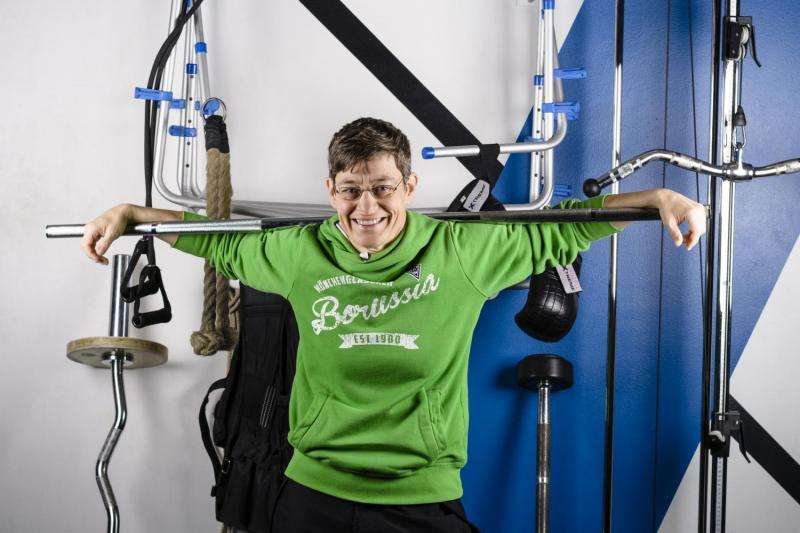Health is the new religion

Can you describe health and fitness as a religion? The answer is Yes! Britta Pelters at Halmstad University, along with her research colleague Barbro Wijma from Linköping University, concludes that today's health community meets all the criteria for being a religion. Something, which means greater risks for those who do not fit in to the healthy template.
The idea of the research project was sparked when Britta Pelters, who is a Senior Lecturer in Health Education, began to reflect on the amount of images, headlines and texts in the media about health and which also contain religious metaphors.
Examples of wordings that aroused her interest were "that the autumn 5:2 is not about a hymn but about a diet hardly needs to be written" and "in the quest for the perfect body a two-day self-starvation is the new salvation" (DN 2013-09-02). The next step for Britta Pelters was therefore to ask the question "is health a religion?".
"We referred to Vanderpool's sociology of religion, which includes a comprehensive list of ten religious characteristics, which we applied to the hallmarks of the institutionalised health religion in Western societies. During the study, we found that today's approach to health fits all ten features," says Britta Pelters.
The divine health
In a religion there must be something sacred that is extraordinary and existentially meaningful. The World Health Organization (WHO) defines health as "a state of complete physical, mental and social well-being".
"This definition portrays the perfect health image and can be seen as a divine principle. Through health, people have control of something, or at least they think they do. Thus, health provides the need for reassurance in the same way a divine force does," says Britta Pelters.
At the same time, the feeling of control can go too far which leads to disappointment, and sometimes shame over one's own body, for example during disease.
"Many are upset if they suffer from illness since they feel that they have fulfilled all their obligations to obtain a healthy body – they have been training, eating right and sleeping well et cetera. It is not unusual that people think that their body has betrayed them."
Health priesthood
There are also representatives of the ideal that can be interpreted as a form of priesthood. Examples include health bloggers and health scientist who love to share – or preach – about health tips, such as special diets and training methods.
"It may not always be that people want to be perceived as a 'health priest,' but the role can easily be given to you," says Britta Pelters.
Another characteristic religious factor is a comprehensive worldview. Britta Pelters argue that in the western "health society", our genes are what connect everything that is health-related.
"The idea that genes with their built-in opportunities and risks make it possible for people to find their place, purpose and destiny in our health promotion and disease prevention community. The implicit promise – good health leads to a good life – has become morally loaded and carries a sense of duty."
Increased risks
To show that you have perfect health is also a way to introduce yourself to the world as a capable and valuable person. Britta Pelters believes that health religion mainly prevails in the middle class. That's because this group is often dependent on presenting itself as high performance people. Making a health trip can therefore also mean making a class trip.
"But when health also becomes a class issue, it involves a risk for those who do not fit into the healthy template. In a 'health religion society,' their personalities can be judged by their weight," says Britta Pelters.
Symbols and rituals
In the health religion, gyms are important iconic locations symbolising the mentioned values, expectations and obligations. The gyms can be seen as "fitness temples" and serve as places for worshipping the body by training. Rituals are also something that characterises a religion.
"The gym is filled with rituals, with everything from training schedules to be followed in detail to someone who always buys a certain kind of energy drink before their workout," says Britta Pelters.
Britta Pelters hopes that awareness of this religious view can both play down the health topic and provide new approaches for health scientist that work in different organisations.
Vanderpool comprehensive list of religious characteristics:
- The sacred
- A comprehensive world view
- Moral values
- A protective screen
- Salvation/liberation
- Symbols
- Rituals
- Certain moods and emotions
- A conviction that the content of one's religion is uniquely realistic and true
- Community
More information: Britta Pelters et al. Neither a sinner nor a saint: Health as a present-day religion in the age of healthism, Social Theory & Health (2015). DOI: 10.1057/sth.2015.21
Provided by Halmstad University
















